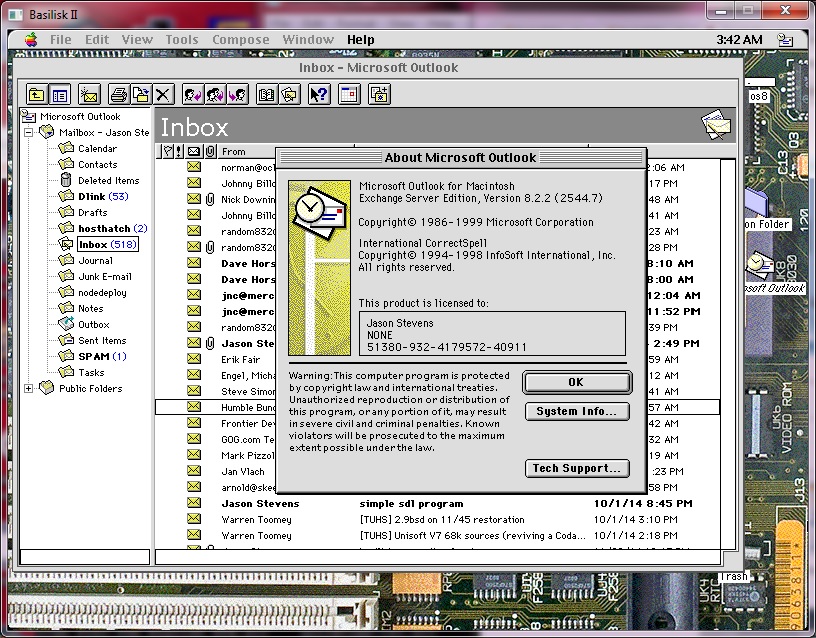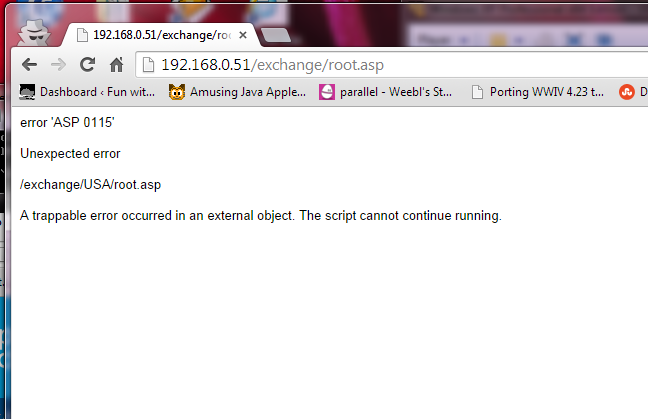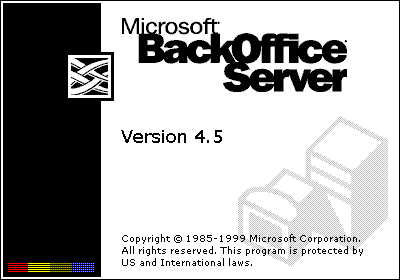
Stylized logo!
Every so often, I’ll get either emails or messages from various people wanting to run their own exchange server setup in a similar method that I have setup, except that they are lacking either Windows NT Server discs, or even the Exchange server disc. Â I always end up pointing people to eBay, although contrary to the last few years, prices of old Exchange Server have gotten expensive. Â However there is a different SKU, and way to get them both, plus a lot more, enter the late 1990’s server craze of product consolidation, Microsoft Back office.
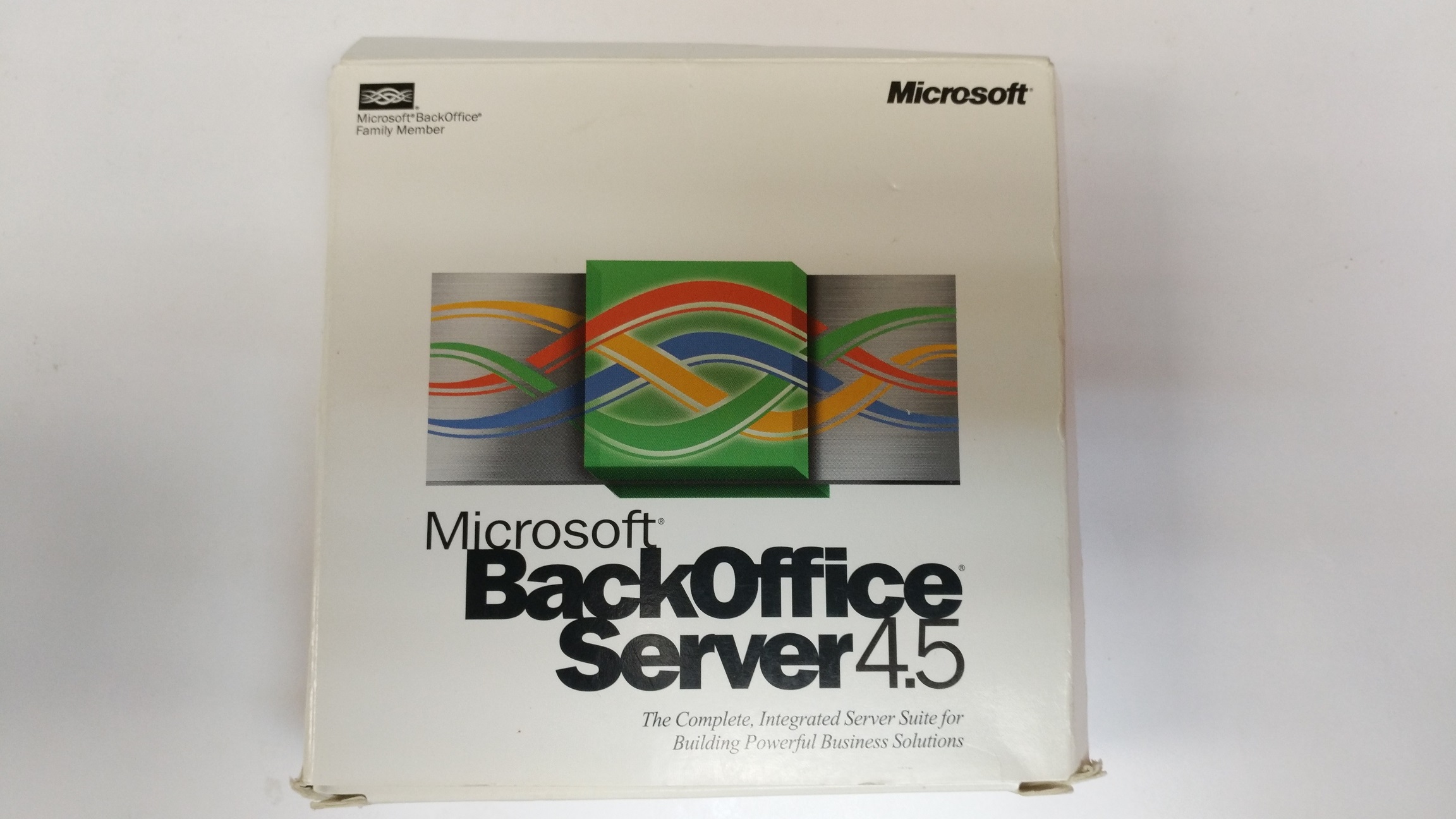
Back Office media kit
In all version 4.5 comes on 7 CD’s containing:
- Windows NT Server 4.0/IE 5.0/MMC 1.0
- SQL Server 7.0
- Proxy Server 2.0/Option Pack
- Exchange Server 5.5
- Site Server 1.0
- Systems Management Server 2.0
- SNA Server 4.0
Before server virtualization took off, the trend for small branch offices and small organizations was to get a single server and try to run everything all at once. Â Of course this leads to an incredible amount of inter-tangled dependencies, and possible collisions when involving 3rd party software, along with possible performance issues for stacking so much onto one box. Â How times have changed! Â Where today we may run all the same services on a single physical box, however with each server component getting its own VM, it lends to far better stability as you don’t have so many applications with possible DLL/system versioning issues, and better resource management as you can easily prioritize VM’s or even suspended ones that are infrequently needed. Â Having lived through it, there was nothing like having a needed service pack for one issue on one component, which then broke something else. Â Needless to say this is why we have virtualization, and things like docker to deal with DLL hell.
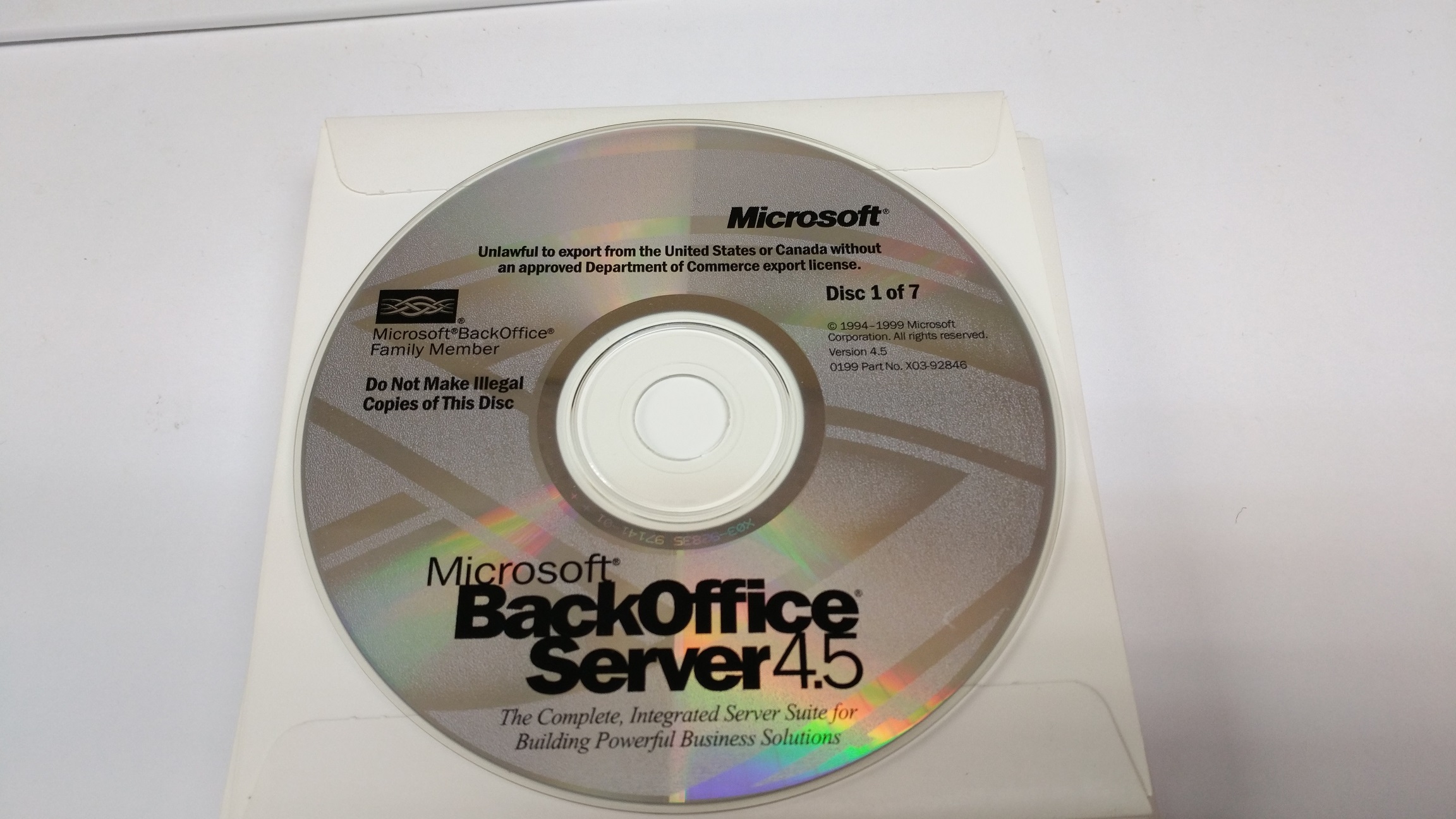
CD’s
There is no real difference between these Back office versions of the server apps, which is why I would recommend this over a standalone package as you get so much more.
SMTP along with POP and IMAP, are largely unchanged. Â While Outlook 2016 may not support Exchange 5.5 directly, you can configure it as an IMAP server, and connect just fine. Â I’d highly recommend something like stunnel to wrap it with modern encryption, something that Windows NT 4.0 is lacking. Â Combined with an external relay to do “modern” features like DKIM, spam filtering and obscuring your server’s direct connection on the internet, there is nothing wrong with using it as a backed, even in 2017.
SQL 7 is the first version in the “rewrite” of Sybase SQL, supporting the new client libraries, which .Net 4.5 on Windows 10 can still happily connect to, unlike SQL 6.5 and below. Â I use it occasionally to quickly prototype stuff as needed or load up datasets to transform them. Â I also like the SQL scheduler to do jobs in steps, as it can catch error codes, and you can setup elaborate processes.
I can’t imagine having a use for SNA Server anymore as IBM had shifted all their mainframes from SNA, to TCP/IP. Â I would imagine with a current software contract that is what people would be using, but somehow I’d like to imagine some large organization still using 3270’s on people’s desks, and a SNA gateway to bring sessions to people’s desks. Â But that is highly unlikely. Â Back in the day COM/TI was a big deal to take COBOL transactions and package them up as Microsoft COM objects to later be called either directly, or middleware via DCOM. Â Although who knows, when it comes to legacy stuff, Im sure somewhere has type 1 token ring MAU’s, and SDLC links.
Packages like Back Office is what basically pushed out Novel from the market as they didn’t develop their own solutions in time, and deploying server software to Novel Netware proved to not only be very precarious, but along with it’s single application process space, proved to be extremely unreliable. Â Not to mention that older protocol companies like DEC, IBM or Novel were entrenched in their own proprietary network stacks, and TCP/IP was frequently seen as something to be purchased separately both for the OS, and the application. Â Microsoft certainly did the right thing by having a free TCP/IP for Windows for Workgroups, and including it in Windows NT, and Windows 95.
As always the option Pack for Windows NT 4.0 nearly brings it up to the functional level of Windows 2000, and is a great way to build that virtual corporation for testing.

